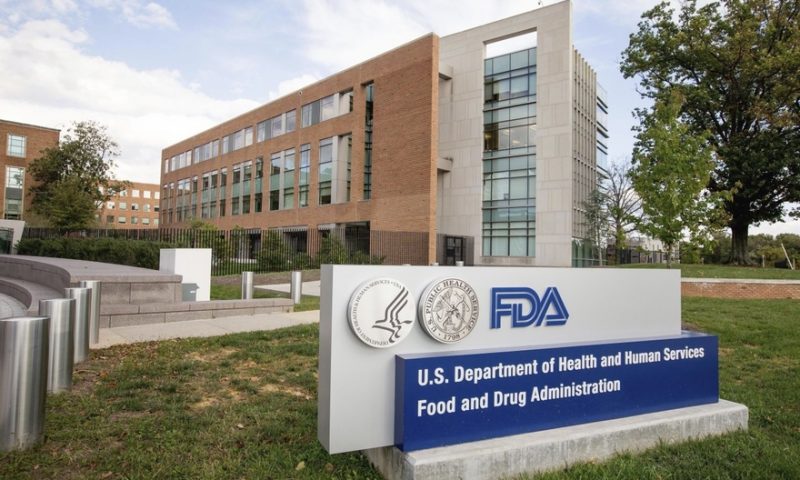Eli Lilly’s Zyprexa may be one of the best treatments out there for schizophrenia, but it’s not widely used because it can cause extreme weight gain. Alkermes thinks it has a solution, and an FDA panel agreed—at least, kind of.
Alkermes is seeking approval for the drug, ALKS 3831, in schizophrenia and bipolar I disorder. The drug combines olanzapine, the active ingredient of Zyprexa, with samidorphan, an opioid antagonist designed to counter the weight gain and metabolic side effects of Lilly’s antipsychotic. The FDA’s Psychopharmacologic Drugs Advisory Committee and Drug Safety and Risk Management Advisory Committee voted 15-1 on Friday that Alkermes showed samidorphan “meaningfully mitigates” weight gain linked to olanzapine, and 13-3—with one panelist abstaining—that the company “adequately characterized” the drug’s safety profile.
The FDA’s main focus, however, was how samidorphan, an opioid antagonist, might affect patients taking opioids like morphine or oxycodone. In briefing documents (PDF) published Wednesday, agency staff spotlighted multiple issues for these patients, including a reduced painkilling effect in patients taking opioids, withdrawal symptoms in patients dependent on opioids and opioid overdose if patients try to overcome either of these problems by taking more opioids than normal.
Alkermes plans to tackle these issues in the drug’s labeling, which will echo that of approved drugs that contain opioid antagonists, like naltrexone, the active ingredient of Vivitrol, Alkermes’ treatment for opioid and alcohol dependence. But in an 11-6 vote, the panel disagreed on whether labeling would be enough.
“Labeling will do absolutely nothing to mitigate the risks,” said Steven Meisel, system director of medication safety at Fairview Health Services in Minneapolis, adding that the psychiatrists who prescribe ALKS 3831 will not be the same doctors who prescribe opioid painkillers—those would include emergency room physicians, orthopedic surgeons, oral surgeons and the like.
“All they’re going to see if they look at a patient indication list is some form of olanzapine antipsychotic, and the idea or notion that there is going to be a negative interaction with the prescribing of opioids is going to fly right by them. It’s not going to compute. They’re not going to be alert to that.”
Another concern comes on the patient side.
“Although labeling has been sufficient for opiate antagonists when used for other purposes, this combination medicine is difficult and poses unique risks,” said Felipe Jain, M.D, an assistant professor of psychiatry at Harvard Medical School. “This could be started when someone is manic or psychotic, or suffering from cognitive disorganization, which accompanies those states.”
Patients may improve as they take the drug over time, but there’s no guarantee they’ll remember the labeling that they saw when they started taking it, Jain added. That’s bad news if they wind up in the ER and need to self-report medications to the doctors there.
“Most patients are reluctant to even reveal opiate use, and if they did have some rare medical emergency and had to go to the emergency room, they would say they’re on a medicine for schizophrenia, maybe they’ll say olanzapine in general. I don’t think they would remember the combination of it, and non-psychiatrist providers would be hesitant to stop such a medicine,” said Sonia Krishna, M.D., of the University of Texas at Austin’s Dell Medical School.
Other panelists, though, believed in the power of labeling.
“I have the utmost confidence that the agency can fix it with labeling, always. We know there is a lot more awareness about opioid antagonists. With so many products like buprenorphine and naltrexone, people are a lot more in tune in the emergency room and surgical places to be aware,” said Rajesh Narendran, M.D., a psychiatrist and professor at the University of Pittsburgh.
“If not, it can be caught by a pharmacy-based program to flag that. With labeling, there is no reason to hold this drug to a completely different standard to that we hold naltrexone because it’s more widely known. Labeling and education can probably address this concern,” Narendran added.
Education is especially important, said Kim Witczak, the panel’s consumer representative.
“The FDA should be looking at how it’s marketed, the advertising and marketing materials going to physicians and patients,” Witczak said. Because of the drug’s advantage over olanzapine alone, its risks may be lost in the weight gain story.
The company needs to put the opioid interactions front and center, “not just in the little box that gets fastly read over some pretty picture, because that is not what people are going to hear. People are going to hear the weight loss and less weight gain,” she added.
The FDA is set to decide on Alkermes’ treatment by Nov. 15. While it isn’t bound to follow committee recommendations, it usually does.
“All told, we believe the regulatory review process for ‘3831 is not one of significant controversy ahead of Friday’s AdCom and the Nov 15th PDUFA,” JPMorgan analyst Cory Kasimov wrote in a note to clients ahead of the panel meeting. “Rather, the more important question is whether ‘3831 can ultimately sell in a highly genericized market.”

